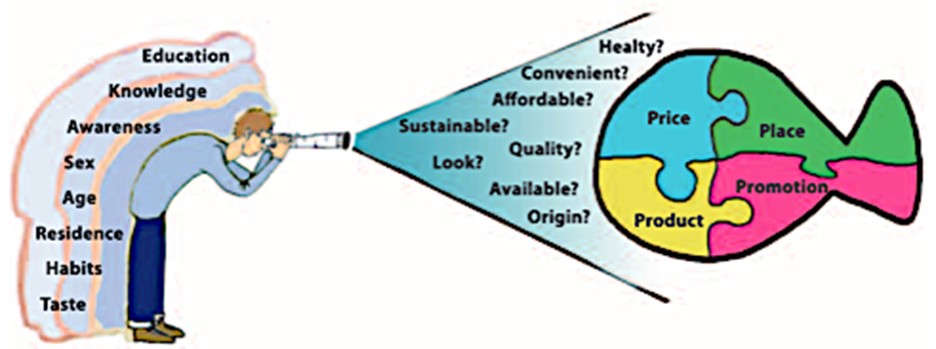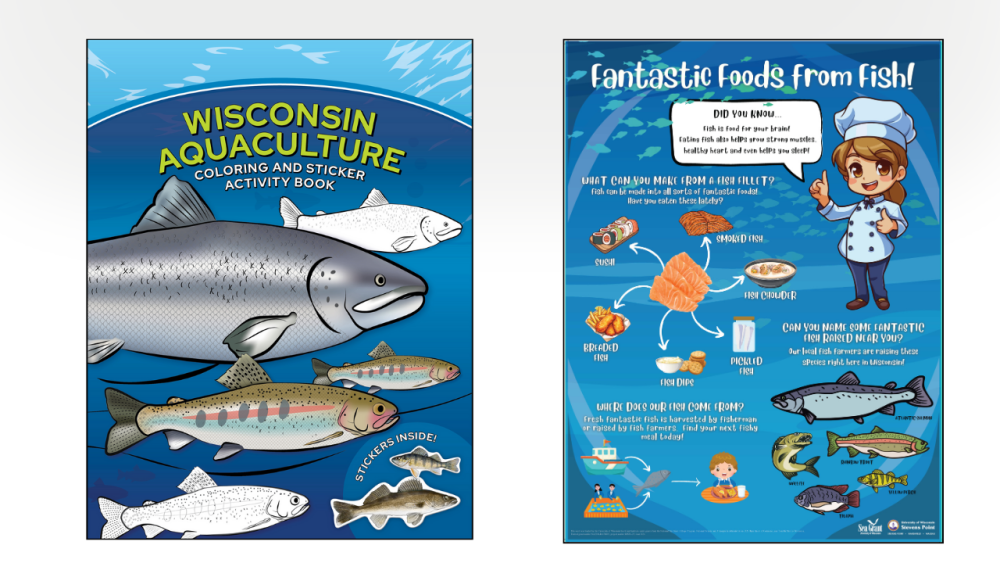Expand and Diversify Great Lakes Aquaculture through Value-Added Products
FUNDED BY: NOAA NATIONAL SEA GRANT COLLEGE PROGRAM
BACKGROUND
The average person in the United States consumes approximately 7 kg of seafood annually. Meanwhile, the United States Department of Agriculture (USDA) recommends that individuals consume 142 g of protein per day, or about 52 kg per year. Shifting protein consumption from terrestrial animals to farmed fish and plant sources will provide human health and environmental benefits. However, the world’s fisheries will not be able to keep up with advancing global demand due to the depletion of wild fish stocks as a result of overfishing and habitat destruction. Thus, there is a need for farmed seafood, which may be filled by the aquaculture industry, and the Great Lakes’ aquaculture industry in particular.
IMPORTANCE OF VALUE-ADDED
Value-added products have the potential to increase the economic and environmental sustainability of the Great Lakes aquaculture community. These more refined products have the potential to expand the reach of the market both geographically and to new consumers who are seeking more convenience-based food and non-food products. This area is ripe for expansion, as the entire US market for value-added food products is worth more than $300 billion. However, the market for all fish and seafood is only $35 billion. Expanding value-added products from aquaculture will increase the economic viability of the Great Lakes’ production system by allowing goods to be transported further, while also transforming current waste products into marketable goods, which is beneficial both environmentally and economically.
 Heterogeneity of consumers and their corresponding view of value-added aquaculture products.
Heterogeneity of consumers and their corresponding view of value-added aquaculture products.
Photo Reference: European Commission Maritime Affairs and Fisheries, “Adding value to local fishery and aquaculture products,” Farnet-Guide 3, 2011.
THE PROJECT
This project will utilize a survey-based approach to quantify the type, volume, and sales of value-added and value-recovered products sold by aquaculture businesses in the Great Lakes Region. The project will interview aquaculture producers in greater detail to determine their motivations for producing these products and evaluate the potential for market expansion through diversification and enhancement of value-added production. An assessment of the environmental impacts of the products produced in the region will be generated for use by the producers to allow for process improvement. This project will work closely with the aquaculture producers to provide assistance and insight into market expansion through the usage of value-added products. To promote public education, this project will create a coloring book and poster aimed at increasing the awareness of aquaculture for children.

This project supported the creation of two education deliverables to educate students on aquaculture. An aquaculture coloring and sticker activity book, available for free download or purchase off The University of Wisconsin Sea Grant Institute website, as well as a poster to showcasing fish can be an easy, diverse and important seafood choice. To receive a free copy of each, email Outreach Specialist, Emma Hauser: ehauser@uwsp.edu.
OBJECTIVES
This project will:
- Demonstrate a clear understanding of economic and market issues affecting US aquaculture industry stakeholders.
- Increase the knowledge base of various aspects of aquaculture economics and markets with the goal of advancing management of existing and potential aquaculture businesses.
- Include funding (Federal or Match) for Sea Grant extension personnel and relevant activities (e.g., education, outreach, transfer of technology and results) to build on past research and inform stakeholders.
- Involve industry stakeholder participation throughout the project.
PARTNERS
- University of Wisconsin-Stevens Point Northern Aquaculture Demonstration Facility
- University of Wisconsin Sea Grant Institute
- Department of Civil and Environmental Engineering, University of Wisconsin-Madison